#subsp
Explore tagged Tumblr posts
Text
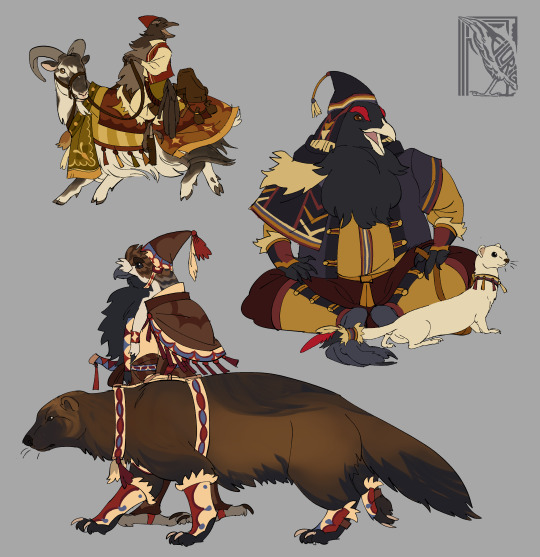
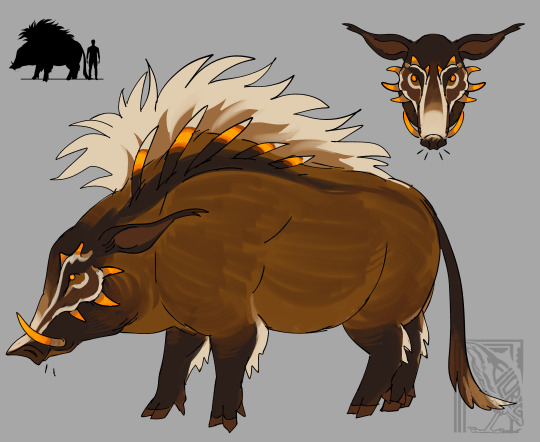
some stuff involving non sapient creatures in pareidolia, first image is some animals that tomtar have domesticated, second is a remake of gloson, which is a vätte but is, contrary to most other ones ive made, not a sophont and is instead domesticated by trolls. more info below the cut...
ive already talked about the tomteget in another post, so i wont go into detail about them here, but the one shown in the picture is gullmar's goat (and he is there as well as ucan see). tomtar also keep a domesticated breed of wolverine and ermine, used for some different purposes - wolverines more as guarding/herding animals and ermines to hunt. tomtar don't actually tend to hunt a lot of large prey at all, and what they do hunt is sort of limited as a lot of game birds are sacred to them due to folklore (basically ptarmigans, corvids, grouses, capercailles and things in those veins..). therefore despite how small ermines are they can hunt most of the quarry they prefer such as hares, ducks etc - especially bcs the tomte variety of ermine is bred to be a bit larger and more robust. they can also just be kept as companion animals for many tomtar. wolverines meanwhile serve well as guarding and herding animals due to their size and strength. there is a notable regiment of wolverine fighters in the midlands front - where interested tomtar are trained for combat utilizing the power of the wolverine - the one pictured though is a regular herding/guarding animal though. there are probably some smaller tomte hunting groups that try to go for bigger game with them such as wolves etc. but its definitely pretty unusual. tomteget goats are basically universal across tomte cultures, but the tomte wolverines and ermines are a bit more limited, more occuring in northern cultures historically. although as time goes on they have been spread further south, especially as the midlands front was established and increased the communicative network between different disparate tomte societies. 2. this is just a remake of the gloson from that older post bcs i wasnt really happy with the design - its a laaaaarge animal but didnt really feel like it proportionally bcs i stuck too closely to the normal eu swine proportions... things are mostly the same about them though. the orange parts of the horns glow!
#worldbuilding#fantasy#folklore#tomte#gnome#gloson#nordic folklore#spec bio#creature lore#pareidolia tag#bestiary#speculative fantasy#also i am gonna expand design possibilities for tomtar as u can see its not just limited to very ptarmigan/crowesque designs...#basically going to stick to grouse/ptarm/caperc. etc for the northern subsp.#and diff corvids for the southern subsp.#crosses between those can be a mix of both of course#oc: gullmar
268 notes
·
View notes
Text
god i HATE subspace i would never draw him constantly


#ouuuhh my finger slipped and opened the wrong art files#i could never like subsp ace hes so meansies#/silly#baphodoods#subspace phighting#phighting art#phighting!
43 notes
·
View notes
Text

#park#Corydalis fumariifolia subsp. azurea#Sapporo#豊平公園#エゾエンゴサク#札幌#HD PENTAX-DA 20-40mm F2.8-4 ED Limited DC WR
9 notes
·
View notes
Text
Fried steaks of Spanish Mackeral (马鲛鱼) or Narrow-Barred Mackeral (Scomberomorus commerson). Locally this popular food fish in Singapore is known as Batang and the flesh used in fish soups and otah.
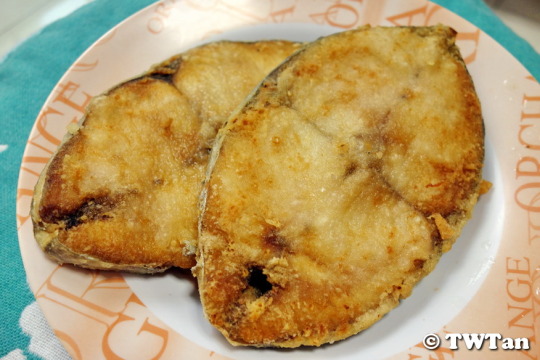
The Asparagus Beans (Vigna unguiculata subsp. sesquipedalis) mum sliced them into sections before stir-frying with squids, prawns and minced pork. Together with reheated leftover roasted chicken, it still a hearty and satisfying dinner.


#Mum's Cooking#Home-Cooked#Dinner#Spanish Mackerel#马鲛鱼#Narrow-Barred Mackeral#Scomberomorus commerson#Batang#Fish#Seafood#Asparagus Bean#Yardlong Bean#Vigna unguiculata subsp. sesquipedalis#Squid#Prawn#Minced Pork#Roasted Chicken#Leftover#White Rice#Food#Buffetlicious
26 notes
·
View notes
Text

散歩していたら高い塀の内側で咲いていた、
「ミツバツツジ(三葉躑躅)」のピンク色の花。
ツツジ(躑躅)属。
別名:ホンミツバツツジ(本三葉躑躅)。
欧文名:Rhododendron dilatatum subsp
40 notes
·
View notes
Video
n536_w1150 by Biodiversity Heritage Library Via Flickr: Icones florae Germanicae et Helveticae, simul Pedemontanae, Tirolensis, Istriacae, Dalmaticae, Austriacae, Hungaricae, Transylvanicae, Moravicae, Borussicae, Holsaticae, Belgicae, Hollandicae, ergo Mediae Europae. Lipsiae,F. Hofmeister [etc.]1834-1912. [v. 1, 1850] biodiversitylibrary.org/page/6158239
#Europe#Pictorial works#Plants#New York Botanical Garden#LuEsther T. Mertz Library#bhl:page=6158239#dc:identifier=https://biodiversitylibrary.org/page/6158239#botanical illustration#scientific illustration#Torilis microcarpa#Torilis ucranica#Chaerophyllum aromaticum#Ferulago sylvatica subsp. sylvatica#Ferulago sylvatica
3 notes
·
View notes
Video
Chrysanthemum arcticum subsp. arcticum by hirorin 2013
#公#arcticum#subsp.#arcticum The#Hiroshima#Botanical#Garden#flower#park#アキノコハマギク#公園#公園・農園#広島市植物公園#草花#広島市#広島県#日本#植物#flickr
3 notes
·
View notes
Text
reblogging SOLELY to let people know that this video is AI. look closely at the feet and the face as it changes angles, there's a weird morph and the face isn't even shaped like the species its trying to imitate


real picture on the left, fake on the right. it becomes really obvious how artificial it is in comparison to the real thing! its even missing one of the cuter field marks of the long-tailed tit (Aegithalos caudatus caudatus subsp, without the eyebrow), their little yellow "eyeliner". also this isn't even mentioning this mess


even if we're going by the bird not having the feet tucked in completely because it's a takeoff or something, they... are not shaped like whatever that is
its a real shame because long-tailed tits are impossibly cute in real life, moreso than this kind of uncanny video is, so ill just link some actual cute long-tailed tit footage below :)
youtube
#filurig.txt#sorry ive seen a pic from this video around before and immediately thought 'this looks ai' this is the first time ive seen the video and Ye#it Definitely is.#also for some reason when looking for what the source of this vid is (cant find it but i dont need it to see the Ai)#they tend to claim long tailed tits/'shima enaga' are exclusive to japan/hokkaido?#when they are in fact not! there is another subsp. with black eyebrows in europe BUT the eyebrowless subsp that is in japan#is also found in northern parts of europe! (guy who has seen them irl)
6K notes
·
View notes
Text

Edelweiss_-_Monte_Zugna,_Rovereto,_Trento,_Italy_-_July_20,_2014.jpg
#wikimedia commons#2010s#2014#Leontopodium nivale subsp. alpinum#Files with coordinates missing SDC location of creation#CC-BY-4.0#Self-published work
0 notes
Text

8/18/24
#variegated yellow archangel#Lamium galeobdolon subsp. argentatum#plant#flowering plant#eucidot#asterids#Lamiales#Lamiaceae
0 notes
Text
UHH I SAW A VIDEO ON YOUTUBE ABOUT THIS SHIP-
youtube

guyz do u.. do u zee teh vizion.. hear me out plz...
i hav been microwaving thiz crackzhip in my brain 4 a bit now :v
879 notes
·
View notes
Text

#park#Corydalis fumariifolia subsp. azurea#Sapporo#豊平公園#エゾエンゴサク#札幌#HD PENTAX-DA 20-40mm F2.8-4 ED Limited DC WR
3 notes
·
View notes
Text
5 Jenis Anggrek Dendrobium Keriting Yang Cocok Untuk di Koleksi
5 Jenis Anggrek Dendrobium Keriting Yang Cocok Untuk di Koleksi Jenis Anggrek Dendrobium Keriting – Anggrek dendrobium keriting sering juga dapat dijuluki sebagai anggrek tanduk. Dinamakan demikian karena ukuran batang anggrek beserta bunganya yang terkesan ‘jumbo’. Selain itu, Dinamakan Dendrobium discolor disebabkan karena ia memiliki dua warna yang berbeda yang mana mendominasi mahkota…
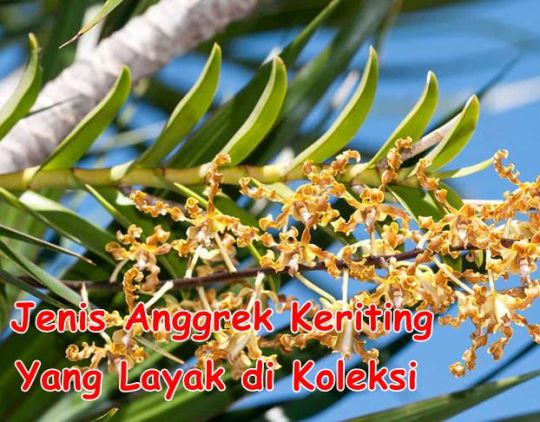
View On WordPress
#anggek dendrobium keriting#bunga anggek dendrobium keriting#Dendrobium discolor#Dendrobium discolor subsp. discolor#Dendrobium discolor subsp. incurvata#Dendrobium discolor var. broomfieldii#Dendrobium discolor var. fimbrilabium#Dendrobium discolor var. fuscum#jenis anggek dendrobium keriting#tanaman anggek dendrobium keriting#varietas anggek dendrobium keriting
0 notes
Text
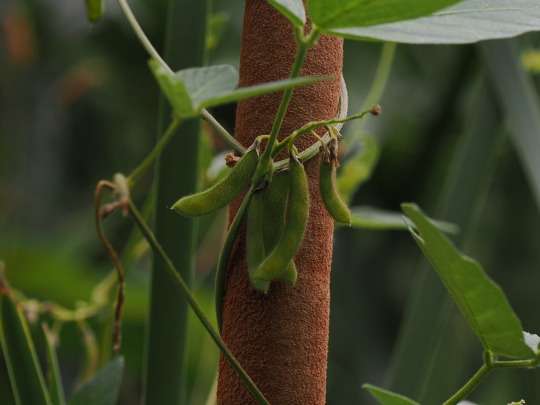

0 notes

